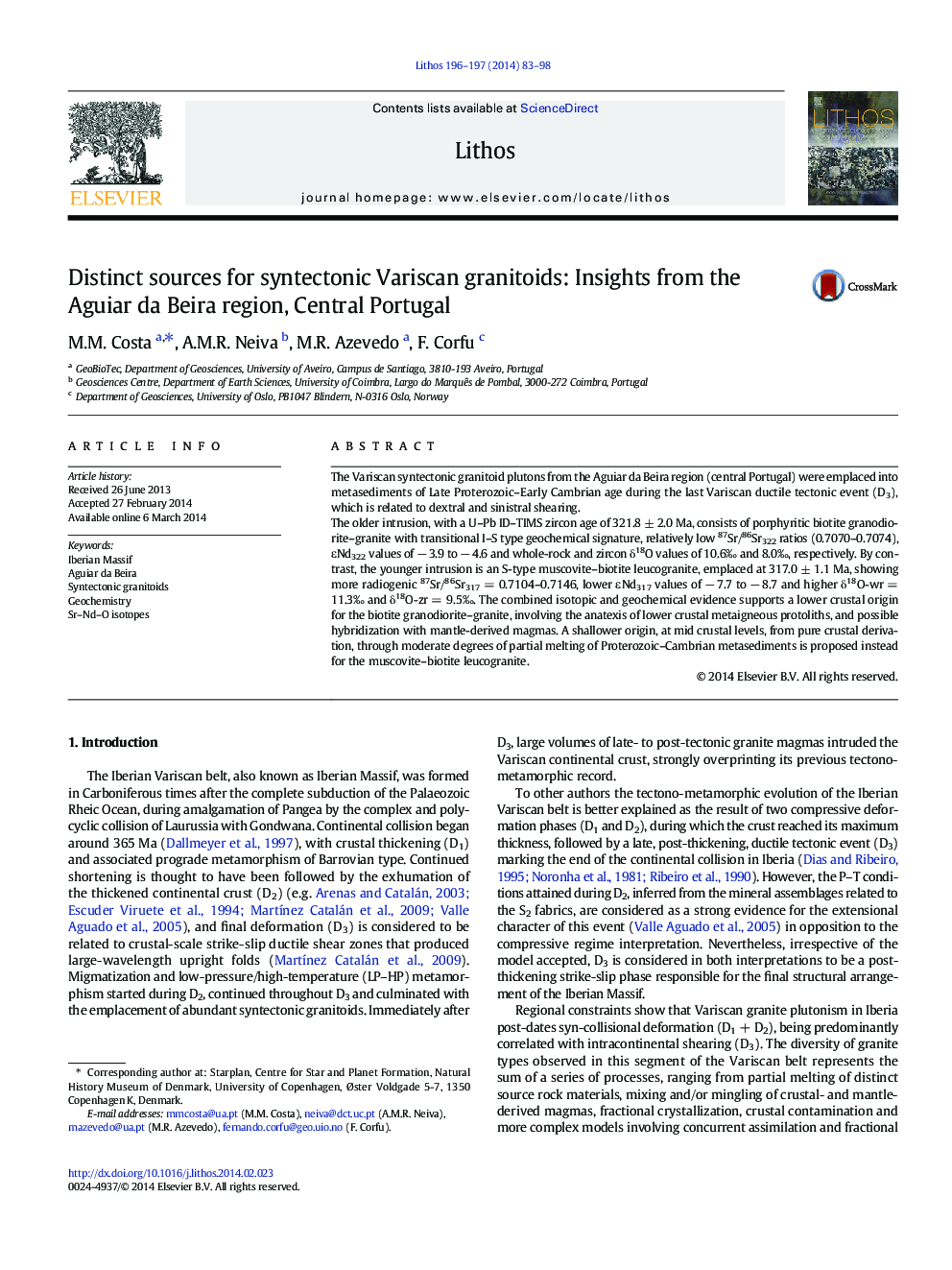| Article ID | Journal | Published Year | Pages | File Type |
|---|---|---|---|---|
| 4715975 | Lithos | 2014 | 16 Pages |
•Distinct sources for syntectonic Variscan magmatism•Lower crustal metaigneous rocks anatexis and/or magma mixing proposed for the genesis of the early biotite granodiorite-granite•Middle-upper crustal metasedimentary source for the peraluminous leucogranite•Structurally different crustal levels reaching partial melting during crustal thickening and subsequent extension
The Variscan syntectonic granitoid plutons from the Aguiar da Beira region (central Portugal) were emplaced into metasediments of Late Proterozoic–Early Cambrian age during the last Variscan ductile tectonic event (D3), which is related to dextral and sinistral shearing.The older intrusion, with a U–Pb ID–TIMS zircon age of 321.8 ± 2.0 Ma, consists of porphyritic biotite granodiorite–granite with transitional I–S type geochemical signature, relatively low 87Sr/86Sr322 ratios (0.7070–0.7074), εNd322 values of − 3.9 to − 4.6 and whole-rock and zircon δ18O values of 10.6‰ and 8.0‰, respectively. By contrast, the younger intrusion is an S-type muscovite–biotite leucogranite, emplaced at 317.0 ± 1.1 Ma, showing more radiogenic 87Sr/86Sr317 = 0.7104–0.7146, lower εNd317 values of − 7.7 to − 8.7 and higher δ18O-wr = 11.3‰ and δ18O-zr = 9.5‰. The combined isotopic and geochemical evidence supports a lower crustal origin for the biotite granodiorite–granite, involving the anatexis of lower crustal metaigneous protoliths, and possible hybridization with mantle-derived magmas. A shallower origin, at mid crustal levels, from pure crustal derivation, through moderate degrees of partial melting of Proterozoic–Cambrian metasediments is proposed instead for the muscovite–biotite leucogranite.
